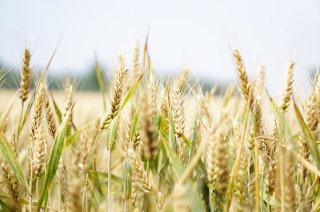
News
Minimising your administrative burden: specialised ABS instruments
EU-recognised specialised ABS instruments (currently the ITPGRFA and the PIP Framework) can help you to minimise the administrative burden while complying with ABS rules. When genetic resources are obtained and used in accordance with these instruments, there are no obligations related to the EU ABS Regulation.
When genetic resources are covered by an EU-recognised specialised ABS instrument (ITPGRFA or PIP Framework), their use falls outside the scope of the EU ABS Regulation (Regulation (EU) 511/2014). Which genetic resources are covered by these instruments, and how can they be accessed?
ITPGRFA
The International Treaty on Plant Genetic Resources for Food and Agriculture (ITPGRFA) deals specifically with plant genetic resources for food and agriculture (PGRFA). The ITPGRFA is recognised as a specialised ABS instrument by the Nagoya Protocol and the EU ABS Regulation.
The core of the ITPGRFA is the multilateral system (MLS), a shared pool of genetic resources of 64 important crops and forages that are listed in Annex I of the ITPGRFA. Genetic resources included in the MLS are available for research, breeding and training for food and agriculture purposes. If the genetic resource is used for other purposes, use of the genetic resource may be in scope of the EU ABS Regulation.
Access to genetic resources in the MLS is provided on the basis of the ITPGRFA’s standard material transfer agreement (SMTA) with fixed conditions regarding use and benefit-sharing. Some countries issue their PGRFA under the conditions of the SMTA, including PGRFA not listed in Annex I of the ITPGRFA. When you access these genetic resources under the SMTA, you are considered to have exercised due diligence as required by the EU ABS Regulation.
For more information, consult the ITPGRFA document and the ABS Focal Point page on the ITPGRFA.
PIP Framework
The Pandemic Influenza Preparedness (PIP) Framework is an international instrument that aims to improve pandemic influenza preparedness and response by establishing a system for 1) the global sharing of H5N1 and other influenza viruses with human pandemic potential and 2) access to vaccines and sharing of other benefits.
The PIP Framework establishes a global multilateral system for Access and Benefit-Sharing (ABS) regarding potential pandemic influenza materials. It applies to H5N1 and other influenza viruses with human pandemic potential, but not to seasonal influenza viruses or other non-influenza pathogens, such as SARS-CoV-2, the causal agent of COVID-19. Genetic resources are accessed through a multilateral system using standard material transfer agreements (SMTA1 and SMTA2).
The PIP Framework is recognised as a specialised ABS instrument in the EU ABS Regulation. When genetic material is covered by the PIP Framework, there are no obligations related to the EU ABS Regulation. It is not yet officially recognised under the Nagoya Protocol, although it may be accepted as a specialised instrument in the future.
For more information on the PIP Framework, consult the PIP Framework page on the ABS Focal Point website.
For more information on specialised ABS instruments, consult sections 2.3.1, 5.1 and 5.2 of the Guidance document.
